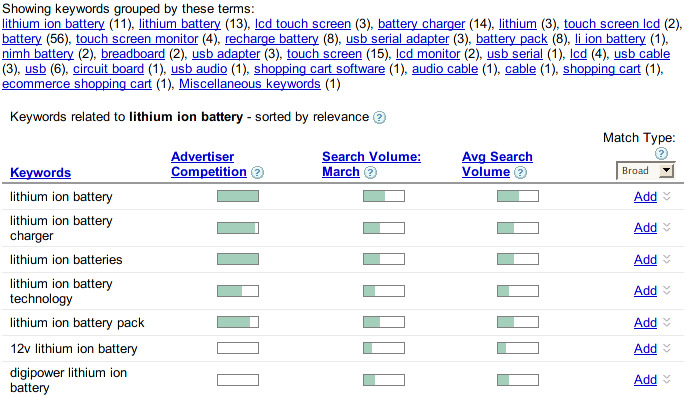Keep Google Happy: SEO For Online Stores
Wow! This takes me back! Please check the date this post was authored, as it may no longer be relevant in a modern context.
As a side project I’ve helped some friends launch Liquidware, a simple storefront for their Arduino modules and other open/hobby hardware. They created a decent amount of buzz about their launch by saving up a bunch of content and pushing it out the same weekend. Blog posts, video, images, all that good stuff:
That was good noise, and it got them enough traffic to sell out of a few stocked items (woohoo!). But after the launch bubble a steady stream of sales needs to come from Google. I’ve been experimenting with the SEO on Liquidware’s site and learned a few smart tricks for your next storefront.
Plan Your HTML For SEO
Most of this comes for free if you’re a good standards-adherent web designer. Use alt tags for images, title tags for href, try and keep your content earlier on the page than navigation. Google looks for keywords in a couple of places, you should use all of these:
- Title tag
- Keywords meta-tag
- Description meta-tag
- Headers, especially h1
- Link tags
- URL
- Content blocks
The nice thing about using an easily customizable cart (like Substruct, which we used) if that much of this can be automated. Product pages at liquidware.com use the first few lines of the product description as the description meta-tag content. They add their category and name to the keywords content, title tag and h1 header. For that matter, the name of every product is also in the URL.
Test & Tune Your Keyword Content
Once you put up your site at a demo or production URL run it through Google’s keyword tool. Liquidware gets these results:

This will give you an idea of how Google will see your site later on. You can use the keyword ideas to find alternate wordings that may index better. Even better, drop your competition’s site into the keyword tool and see if you should bother competing on their keywords or not.
Use Analytics & Webmaster Tools
Really use these tools. The Google webmaster tool will tell you when the big G indexes your site, who links to you, what their keywords are, and what your site’s keywords are. It’ll even tell you where you fall in search query results, and what position your site was in when it was clicked. It’s got some other great features too.
Google analytics is a no brainer, it’s got great info on your site, as well as being able to show you how people arrive at a given page. Even better, making a purchase can be identified as a goal under analytics, showing you how many users start the checkout process and how many complete it, as well as where they came from. This guy has a nice video that sums up goals quite well: Google Analytics: Working With Goals.
Use Google Base
This is the step that really helps push your products further out front. Google Base is a way to inject items into google’s search index, among them individual products. When you search for “arduino” on Google this sneaks right into the results list:

Liquidware’s products should be there! Google base let’s us add them:

There are a couple was to do this, and they’re all quite confusingly documented. They break down to this:
- Upload a tsv or xml file
- Have google fetch the former from a webserver on a regular cycle
- Use an API and your own cart software
We’ve combined the first two: added a Liquidware products RSS feed for Google to fetch nightly, and uploaded it the first time to seed the process. This is a great solution, allowing the Liquidware guys to update products and prices on their store and see them change on Google nightly. Liquidware does have product variations, which Google base does not, so each variation is spun off as another product.
Stay Active
Incoming links have the largest effect on ranking. Pushing updates to youtube will get attention and a quick bursts of links, but the SEO and Google Base techniques above will keep up every-day traffic.
Oh, I’ve been talking about releasing an updated version of the Mootools table sort script I posted on, and that’s still coming. Moving from Nashville to New York was slightly distracting, but there’s a full set of conversion_functions and other features to introduce.
